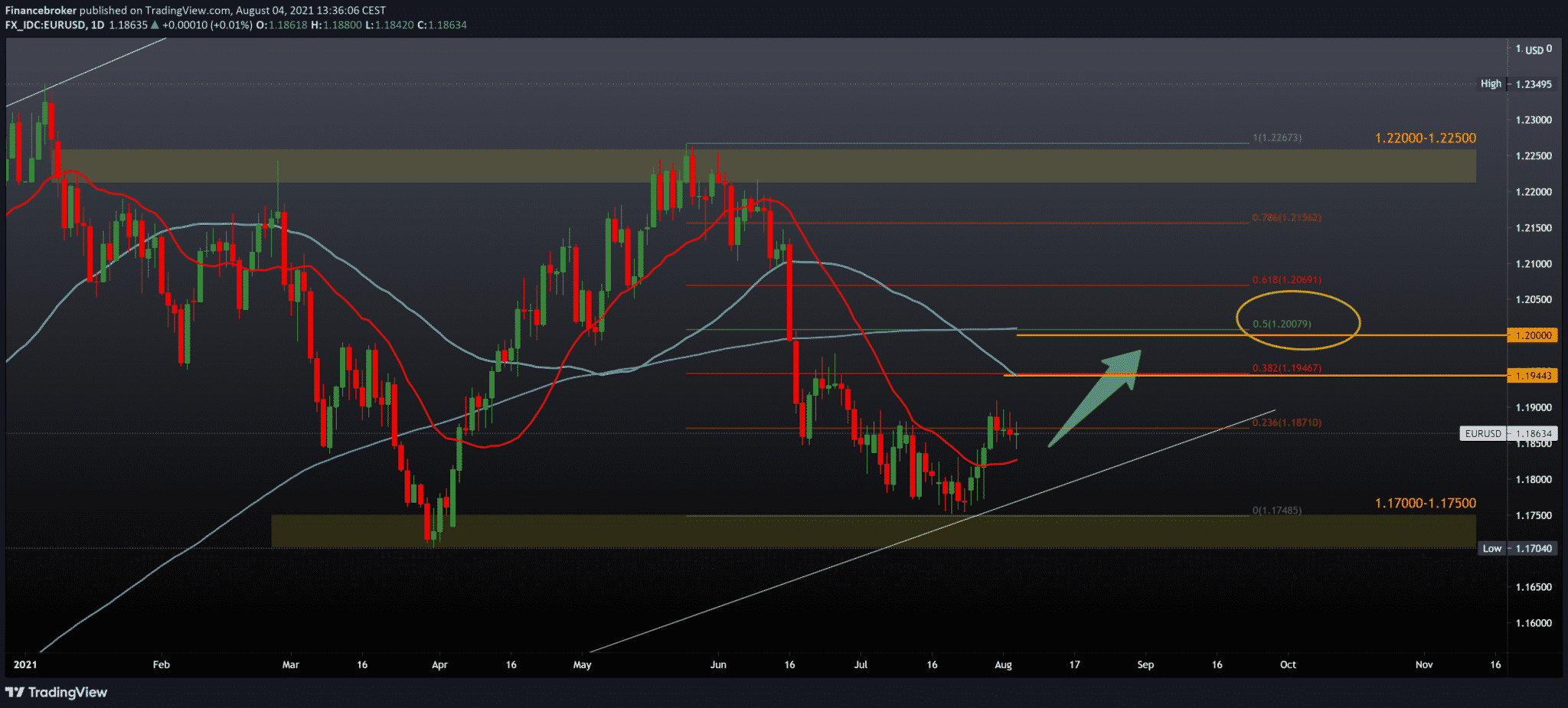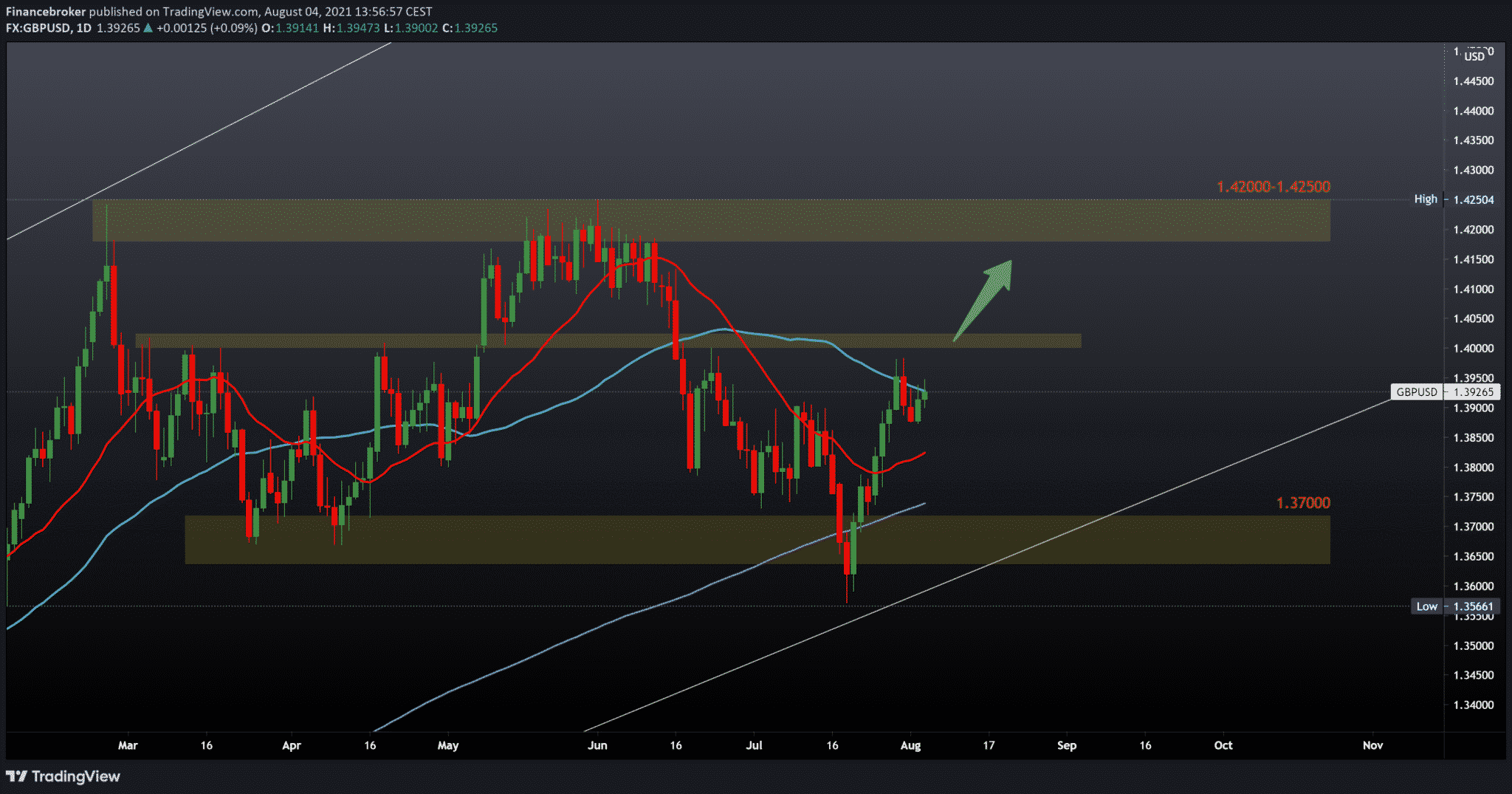
EURUSD,GBPUSD Forecast: The Pairs Are On a Recovery Course
Looking at the EURUSD on a daily time frame, we see that the pair continues to consolidate slightly above 1.18500. The market has been slow for the last few days, but we still have support for the 20-day moving average at 1.18250. We are close to the bottom trend line, which can give additional support to the pair to make a stronger jump towards 1.20000. Before that, we need a positive consolidation above 23.65 Fibonacci levels and a break above the previous high at 1.19000.

The composite production index rose to 60.2 in July from 59.5 in the previous month. But the reading was below 60.6.
A score above neutral 50.0 indicates expansion in the sector. This was the longest continuous series of spreads since the beginning of the pandemic at the beginning of last year.
Service activities have been growing at the fastest pace since mid-2006. Although production output grew at the slowest pace in the last five months, the expansion outpaced that in the services sector.
The easing of anti-virus restrictions and further progress in vaccination increases the demand for various activities in the services sector.
The Procurement Manager, Final Services Index, advanced to 59.8 from 58.3 in June. However, this was below the 60.4 forecasts.
“In addition to the steady increased growth recorded in the manufacturing sector, the astonishing strength of the service sector expansion in July means the eurozone should see GDP growth in the third quarter,” said Chris Williamson, a chief business economist at IHS Markit.
Among the four largest economies in the eurozone, the fastest growth was recorded in Germany, where the expansion rate accelerated to a record high level. In Italy, private sector activity growth jumped to a peak of three and a half years, while Spain and France recorded a milder growth in production.
The pound is struggling to climb above 1.40000. We are currently at 1,39300, and the obstacle is our 50-day moving average, while our 20-day moving average is supported below. The pullback in such cases is always possible, and we are looking for support in the area at 1.38000-1.38500.

Overview of the market
Growth in the British private sector slowed last month due to supply chain shortcomings and a large absence of workers caused by COVID-19 self-isolation requirements, a carefully screened survey showed on Wednesday.
Price pressures have risen the most since the survey began 25 years ago – concerns for the Bank of England finalizing new inflation forecasts released on Thursday. So far, the BoE has recapped that higher inflation will only be temporary.
The IHS Markit / CIPS Services Purchasing Manager Index (PMI) fell to 59.6 in July, the lowest reading since March, from 62.4 in June. The broader composite PMI, which includes industrial PMI data as of Tuesday, showed a similar decline, to 59.2 from 62.2.
“More and more companies have constraints in growth due to the lack of supply of labor and materials, while on the demand side, we have already seen the peak of the phase of reduced consumer consumption,” said IHS economic director Markita Tim Moore.
Last month, service companies were hit by a “pingdemia” of hundreds of thousands of workers who had to isolate themselves for up to 10 days after the government’s smartphone app identified them as close contact with someone who was positive for coronavirus.
The daily number of new COVID-19 cases has dropped by more than half since its peak on July 17 – just before the rules of social distancing were relaxed in England – and the government will ease the demands for self-isolation from August 16.
Despite this, many companies find it difficult to hire staff. Employment growth in the survey slowed to its weakest level in three months, while exports of services continued to be hampered by travel restrictions related to COVID.
Wage costs, higher fuel prices, and transportation were the biggest factors that increased costs in the services sector, where managers reported price increases for the most since July 1996.
-
Support
-
Platform
-
Spread
-
Trading Instrument




